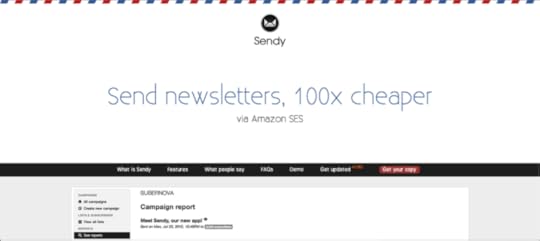Marcu Taylor's Blog, page 29
May 20, 2014
Google Panda 4.0 Update Just Rolled Out
I noticed a few pretty large traffic fluctuations across some of our sites this morning (this site’s traffic increased by 36.7% compared to last week, woohoo)! After a bit of searching around, it turns out that Google’s just rolled out Panda 4.0.
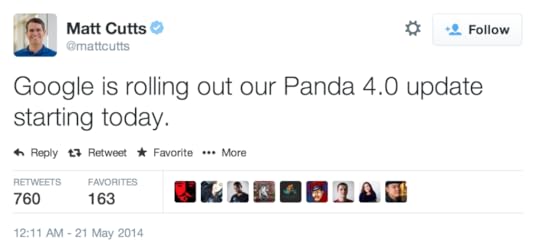
What’s different about this update?
Google’s panda updates target websites with low quality content. In my experience, this usually boils down to one of two fundamental issues that are exacerbated by other issues. Those two fundamental issues being thin content and duplicate content.
While the panda update is said to target everything from slow page loading speed to ad:content ratio, i’ve never come across a website that has been hit by panda exclusively for being slow, having too many ads, or any of the other many factors implied by Google’s panda recovery guidelines (if everything else was okay).
There’s been no comment by Matt Cutts or Google yet on whether this update targeted anything different, but I imagine they’ve tweaked the algorithm to either target a larger range of keywords (incidentally, they did announce that they were working on their pay day loan algorithm over the weekend). Alternatively, Google may have just tightened up how they’re identifying low quality sites.
How big is this update?
Google told SearchEngineLand that the update affects 7.5% of all English queries, to a degree that might be noticed by a regular user.
To me, this looks like a pretty massive update. While Algoroo is reporting slight ‘above average’ changes for yesterday, Mozcast has reported massive fluctuations in search results this week. Of course, we won’t really know until tomorrow’s data comes out – but based on what we’re seeing so far it looks to be a big one.


What to do if your site’s been hit
I’ve written extensively on cleaning up a panda penalty, and what the usual culprits to look into are. As mentioned in the article above, a good place to start is to audit your site against all of the possible causes to diagnose where the issues are.
From there you can begin to systematically make changes that will improve the quality of your site and get it ranking well. Bear in mind that panda updates tend to take a while to fix, as you’ll often need to wait for the next algo data refresh for your site to get reindexed.
I’d be keen to hear what anyone else is noticing with this update. In particular, are the sites that have dropped the same as the ones hit by the last Panda updates, or does there appear to be anything different with this update?
The post Google Panda 4.0 Update Just Rolled Out appeared first on Venture Harbour.
May 18, 2014
Email Marketing Software / Services – Which One is the Best?
Over the years, I’ve played around with a dozen or so email marketing tools.
It’s become clear to me that there’s no one-size fits all solution when it comes to email marketing software. The best tool for you completely depends on what you’re looking to get out of your email marketing.

If, for example, you just need a tool to send out newsletters, GetResponse might be ideal. On the other hand, if you need a service that sends behaviour triggered emails to customers, Infusionsoft may be a better fit. Finding the right email marketing software all depends on what you’re looking for.
In this post, i’ve written a detailed review of six of the most popular email marketing services. For a quick summary and comparison, i’ve created the following table.
Service
Pricing
In the Cloud?
Free version?
GetResponse
From $15/month
Yes
Free trial
Website
Constant Contact
From $15/month
Yes
Free trial
Website
Aweber
From $19/month
Yes
Free up to 500 subscribers
Website
InfusionSoft
From $199/month
Yes
No
Website
Mailchimp
From £12.30/month
Yes
Free up to 2,000 subscribers
Website
Sendy
$59 one-off + $0.001 per email
No
No
Website
Email marketing software reviews
Below, I’ve reviewed each of the email marketing tools mentioned above in great detail. Admittedly, every solution has both upsides and downsides. I’ve tried to keep each review as neutral as possible, highlighting both the good and the bad.
GetResponse
GetResponse are an exceptional underdog in the email marketing space. In my opinion, they’ve built the best email marketing service for small to medium sized businesses. While they may not have the legacy of Aweber, or the strong brand of Mailchimp, they probably have the best overall service.
One of the areas that GetResponse are leaps and bounds beyond their competitors is design. Their newsletters just look beautiful, and they have a great range of templates to choose from.
GetResponse have a huge range of useful features, it’s hard to know where to begin. You can preview your emails on different devices before you hit send. You can A/B test your email campaigns. They also have a great API, making it easy to connect GetResponse with your other cloud-based software.
Another feature I like about GetResponse is their social media integration. This enables you to drive and analyse social media engagement from your email marketing.
Another unique feature that comes in handy is GetResponse’s time travel feature.
Time travel enables you to set a universal time that your email campaign arrives in your recipient’s inboxes. In other words, you can schedule an email that arrives at 9am, regardless of whether the recipient is in London, Moscow, or Tokyo.
This is a life-saver if you have people from all over the World on your mailing list. Gone are the days where your emails arrive at 2am in the morning!
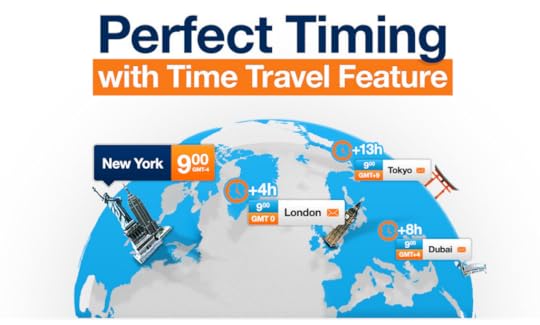
When I first wrote this post, I placed GetResponse much lower in this review, as they used to be a bit pricey.
Since then, they’ve become a lot more affordable. Starting at $15/month, GetResponse is more affordable than both Mailchimp and Aweber’s starter package.
Overall, GetResponse get my vote as one of the best email marketing software providers.
Sendy
If you’re after a ‘no frills’ solution, you may like Sendy. I use Sendy for a few projects, as it’s extremely simple and cost effective.
The main benefit of using Sendy is that you don’t have to mess around with double or even single opt-ins. Because it uses Amazon SES (Simple Email Service) to send emails, you have a lot of control over adding people to your list.
Ideally, your subscribers should always opt-in. Sometimes this isn’t possible, though, and other services like Mailchimp make this quite difficult.
The main consideration to bear in mind with Sendy is that it needs to be hosted on your web server.
In other words, you’ll need to create a subdomain like ‘email.yourdomain.com’. Here you will upload the installation files that you download from the Sendy website.
Thankfully, Sendy provides a detailed setup guide. Their setup guide gives you easy to follow instructions on how to upload the files and connect your site to Amazon SES.
I’m not particularly technical, and I managed to get it up and running in about 25 minutes.
You can also white-label Sendy. This makes it a great choice for agencies wishing to provide clients with an email marketing platform. You can also set the price your clients pay per email, so that you can earn a profit from your client’s email marketing, if you wish to do so.
Below are some screenshots showing some of the functionality of Sendy.

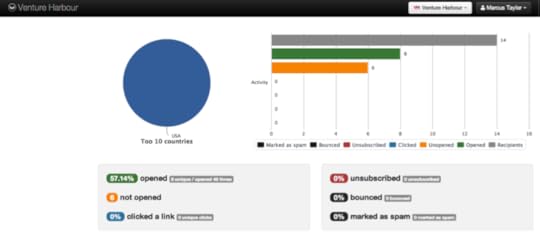
Aweber
If for whatever reason you’re not impressed by GetResponse, I’d recommend looking into Aweber.
Despite looking a bit outdated, Aweber sits in a sweet spot of being cost effective and easy to use. It has all the important features you’d want, without being too feature heavy.
For those starting out, it has great reporting to help you learn what does and doesn’t work. Their email campaign creator is great at walking you through how to setup your signup forms and newsletters.
If you’re more advanced in your email marketing, Aweber has some good features, such as split testing. Split testing enables you to send different variations of a campaign to different segments of your list. This allows you to compare and improve your open and engagement rates.
They also offer auto responders, RSS-to-email, and a ton of third-party integrations. Perhaps their most useful integration is with WordPress. Their WordPress plugin enables you to add email signup forms to your website in a single click.
The thing that I love about Aweber is that it’s so simple, yet still has everything you need to get the job done.
I’ve switched between Aweber and Mailchimp for some of my own projects several times. Despite Mailchimp’s slick design, I find the functionality and reporting of Aweber much better.
With Aweber, you’re not locked into any long-term contracts. Their pricing starts at $19/month, and allows you to send unlimited emails to up to 500 subscribers.
Aweber is a bit more expensive than GetResponse. Although only by $4/month, so it’s really a matter of preference.
Mailchimp
For years, I used Mailchimp to manage the email marketing for TheMusiciansGuide.co.uk, a site I ran with about 12,000 email subscribers. As Mailchimp got bigger, they introduced a lot of features that, in my opinion, have made it quite difficult to use for serious email marketing.

The major downside with Mailchimp is that subscribers must double opt-in. You can, of course, import subscribers without them having to opt-in. For anyone new, though, Mailchimp forces them to opt-in via both a web form and confirmation email.
This meant I was losing about 15% of subscribers who were signing up on the website but not confirming their email address.
The other thing that is not so great about Mailchimp is the homogenisation of their email templates. Because so many marketers use Mailchimp, their newsletter templates look familiar. While you can customise these, they somehow always have that Mailchimp newsletter look!
One thing that I think Mailchimp do particularly well is their API. Their integration capabilities with other services is quite extensive. Whether you want to connect Mailchimp to WordPress, your CRM system, or proposal software, there’s a lot of support to do so.
If having a good API is important, then Mailchimp may be worth consideration.
The general functionality with Mailchimp is fine. Their user interface, reporting, and campaign manager is intuitive and easy to get the hang of. Mailchimp also offer two different pricing structures; pay as you go, and a monthly subscription.
This can be particularly useful if your email marketing is sporadic. When I used to run The Musician’s Guide, I’d often take a break from sending newsletters for months at a time. While more expensive per email, the pay as you go option saved a lot of money over the long run.
At $0.03 per email, that’s over 300x more expensive than Sendy.co.
InfusionSoft
InfusionSoft is an interesting option.
In some ways it’s wrong to compare it with services like Aweber and GetResponse, as it’s not just an email marketing tool. Infusionsoft is a full sales and marketing automation tool. Email marketing is just one of the many tools provided.
That said, it’d be naive to not feature Infusionsoft in this post. For many businesses, their platform is a complete game changer.
So let’s acknowledge the elephant in the room; InfusionSoft is expensive. Their pricing starts at $199/month, plus you have to pay for a kick-starter package that costs $1,999.
For most marketers and business owners, this is way out of budget. For some, though, this is a fraction of the return that Infusionsoft generates for their business.
InfusionSoft is a full CRM system, with marketing automation and eCommerce tools. So what can you do with InfusionSoft that you can’t do with other tools reviewed here?
In short, you can automate your sales and marketing based on customer behaviour.

I was speaking to a friend recently who was telling me that his company created a virtual sales person on Infusionsoft. Bruce, as they named him, keeps in contact with thousands of customers for them. He checks in every few weeks with different messages depending on what each customer has or hasn’t done.
For example, if someone adds a product to their shopping cart but doesn’t checkout, an email can be triggered reminding them to complete their order.
Perhaps you want to automatically send discount coupons to customers on their birthday? Or, maybe you want to create funnels that turn your non-paying subscribers into customers. With Infusionsoft this is all possible.
It’s a complex tool that’s as powerful as it is addictive. The biggest complain I hear from Infusionsoft customers is that you can spend days creating sequences!
If you’re interested in learning more, we’ve written a more in-depth review of Infusionsoft here. In general, Infusionsoft only becomes a good investment when you’re turning over at least $150k per year. It also only really makes sense if your business revolves around selling products online.
If you’re just starting out with email marketing, InfusionSoft is almost definitely not the right fit.
Constant Contact
I’ve never been a fan of Constant Contact, as I find their user interface a bit dated, and their overall service very mediocre. That said, it’s been 3-4 years since I’ve used their service on a client and it does appear that they’ve picked their game up somewhat.
Constant Contact’s selling point used to be that they were the most cost effective solution. Many of our clients used them because they were free (in return for including a Constant Contact logo at the bottom of every email).
It seems that’s changed, as their prices are now quite expensive relative to some of the other options.
Constant Contact charge $50/month for 2,501-5,000 subscribers. To put this into perspective, GetResponse only costs $25-$45 for this amount of subscribers.
In my opinion, Aweber and GetResponse both have better integration capabilities, reporting, and templates. So, it’s hard to understand how Constant Contact are justifying their extra cost.
That said, Constant Contact do have a few interesting features worth mentioning. First of all, they offer every customer a personal marketing coach to assist with any questions or problems you have.
For first timers, email newsletters and auto responders can be quite a challenge to set up, so I can see how this is quite a valuable feature.
Constant Contact appear to be creating a one-stop shop for marketers. With event registration tools, feedback forms, and surveys, it looks like they’re branching out.
This is a brave move, considering that there are excellent free tools like Eventbrite and Survey Monkey.
In general, I find Constant Contact’s offering just a bit too dull. There’s no clear USP or compelling reason why I’d use them over competing services.
In Summary
There are dozens of email marketing services out there. The six we’ve reviewed are just what I consider to be the main contenders for small to medium sized businesses.
I don’t believe that there’s a one size fits all solution when it comes to email marketing, so you need to weigh up your requirements.
The cheapest email marketing software
The cheapest option for email marketing is without a doubt, Sendy.co. Sendy is approximately 100x cheaper per email than the other services reviewed here. It’s by far the most cost effective way to send bulk email. The only considerations are that it needs to be installed on your web server, and the functionality is very basic.
The best email marketing software for entrepreneurs & small businesses
For most entrepreneurs and small businesses, I’d recommend GetResponse.
For businesses that need a full email marketing automation system, I’d recommend InfusionSoft. It’s certainly not the most affordable option, but for a good reason. The automation capabilities can save you days of repetitive work, while lifting your conversions.
Generally, if you’re still undecided, I’d recommend giving GetResponse a shot. If you’re looking for something basic and are technically savvy (and have access to your server), then Sendy is worth a look at. If you run an eCommerce website that turns over at least $150k, then Infusionsoft may be worth the investment.
I hope that’s helped – if you have any questions then feel free to post in the comments below, or contact us here.
Finally, I’ve also created the following video summarising the points in this post.
What’s the Best Email Marketing Software for Newsletters & AutoResponders?
Description:
A review of six of the most popular email marketing software services by Marcus Taylor.
Image Credit: Johnny Hughes
The post Email Marketing Software / Services – Which One is the Best? appeared first on Venture Harbour.
May 14, 2014
What are the Best & Cheapest SSL Certificate Providers?
With the recent discovery of the Heartbleed bug, a major security flaw that was present in masses of websites including Google, Yahoo, Instagram and Netflix, internet security is something that, quite suddenly, is a lot closer to all of our hearts. If you have a website that stores any personal data or processes financial transactions, then its in your interest, and that of your customers, to know about SSL.

What is SSL?
SSL stands for Secure Sockets Layer, and it basically allows for the secure transmission of sensitive data which may include personal information or credit card details. Usually when such data is transferred from one computer to its destination, it will pass through a number of other computers before it reaches the correct one. Therefore, to ensure the secure transmission of data, the details are securely encrypted and then sent to the correct server (rather than a would be criminal’s server). Without the encryption, the data could be read and accessed by any of those computers that the data is passed through, meaning it could be accessible to identity thieves or hackers.
Even if you’ve never heard of SSL certificates before, it’s very likely that you’ve used them if you’ve ever purchase something online, managed your finances or logged into Facebook. To identify a website which possesses a valid SSL certificate, you can simply look at the address bar in the browser. Websites with an SSL certificate will usually have an address that begins with ‘https://’, and you should also be able to see a padlock icon.
Basic SSL vs. Extended Validation SSL certificates
There are different types of SSL certificates available which offer varying levels of protection. Some SSL certificates might just be suitable for keeping log in details for a website secure, whilst others may offer much more robust forms of protection.
One such enhanced type of SSL certificate is known as an extended validation SSL certificate (also known as EV SSL), which will turn the address bar green on the latest versions of any popular internet browser including Internet Explorer, Google Chrome or Firefox. An EV SSL also offers more robust protection against phishing attacks and is the type of certificate adopted by the majority of big commercial websites including Amazon and Ebay.
All websites which purchase SSL certificates need to go through a number of checks to verify the identity of the website and its owner. The more advanced level of SSL, the higher the number of checks. This means that when you see a website with an SSL certificate, you can be confident that the website is legitimate.
If your website has an SSL certificate, then it shows a commitment to your customers, showing that you care about their personal information and that you don’t want it to be easily accessible to those that might abuse it. As internet users become more savvy, it’s certain that they are less likely to use websites that don’t provide the security of an SSL certificate.
Of course, it really depends on what your website is for as to what type of SSL certificate you will require. If your website just sells one type of thing (for example memberships), then a low priced SSL certificate will probably be sufficient. However, if you have an e-commerce site with lots of transactions, then something more renowned and robust may be required. Honestly though, for most small businesses a standard SSL certificate should more than suffice for its security needs.
Why are some SSL providers more expensive than others?
The general difference in price is all down to the verification process that SSL certificate authorities undertake to check that your website is the real deal. Whilst global names like Verisign or Geotrust are well known, their verification checks are manual and slow, but are certainly required for businesses like Amazon or Paypal. However, these checks come at a high price, and would certainly be overkill for most small businesses.
With that in mind, I’ve tried to provide information on SSL certificates that would be suited to small businesses and entrepreneurs alike by meeting their security needs whilst keeping the cost down.
The cheapest SSL certificate provider
If you wish to pay a low price for your SSL certificate, then it is worth checking SSL certificate reseller websites such as ComodoSSLStore.com. Their lowest price certificates include a Comodo Domain Validation certificate for just $6.50 for one year.
For certificates to be this cheap, there must be a catch, right? Truthfully, as long as you stick to well reputed resellers, this isn’t really the case. Unless you are after something very specialised, and you don’t have an issue with relying on reseller support rather than support directly from the certificate authority, then there is little reason not to use a reseller. SSL resellers buy SSL certificates in bulk which then enables them to pass on much lower prices to their customers. If you’re in any doubt however, it’s advisable to ask before purchasing if you have any particular requirements that you’re afraid won’t be met.
With that in mind, I’ve taken a look at three low priced SSL certificate providers and tried to give an honest assessment of the services they provide. Whilst the prices quoted are those given by the certificate authority, don’t forget to look for these certificates on a reseller website to get the best price possible.
RapidSSL
RapidSSL are owned by Geotrust, who are one of the leading SSL certificate authorities. RapidSSL can provide certificates for $11.99 per year, which includes a $10,000 fraud warranty which is perfect for any low volume e-commerce sites.
RapidSSL also offers e-mail support and also provides a 24/7 knowledge base and provides up to 256 bit encryption for one domain name. Perhaps the key thing here is that RapidSSL are literally a business that specialises in SSL, so they won’t attempt to sell you any additional extras that you may find with other services. You can pay extra to cover additional domain names, but this will cost you $199, which is quite pricey in comparison to their standard certificate.
GoDaddy
GoDaddy are probably best known as a web hosting provider, however, one of their many services includes providing SSL certificates. Like RapidSSL, GoDaddy provide a variety of different certificates, with prices starting from £48.99 per year. However, like RapidSSL, the cheapest GoDaddy SSL certificates only cover one domain name and this doesn’t include any mobile variations of your site.
AlphaSSL
AlphaSSL’s cheapest package also starts from $49 (are you beginning to see a pattern here?). The big advantage that AlphaSSL has over GoDaddy and RapidSSL is that it will cover both the www and non www variations of your website (including mobile variations). Like RapidSSL, AlphaSSL is owned by well established SSL provider Verisign and its parent company is Symantec who actually established the SSL standard back in 1995. AlphaSSL’s cheapest SSL certificate only covers up to $1,000 worth of fraud however, which is lower than the warranties offered by RapidSSL and GoDaddy.
In Summary
While we have only touched on a few SSL certificate providers here, there are potentially hundreds of different SSL certificates available on the market. This can be potentially confusing and difficult to navigate, but the general rule of thumb here is to use a trusted certificate authority and you can’t go wrong.
A higher price doesn’t necessarily mean a certificate is better, or any more secure for that matter, so be sure to select something that suits your business needs at the right price for you. Resellers are a good option if you’re on a budget, because you can secure a certificate from a highly trusted certificate authority but at a much lower price.
Image Credit: Adam Lerner
The post What are the Best & Cheapest SSL Certificate Providers? appeared first on Venture Harbour.
November 15, 2013
Venture Harbour Turns One & Wins an Award at the UK Search Awards!
Last night was a very special occasion for Venture Harbour. Not only did it mark one year since Venture Harbour was incorporated, but I also won the award for “Young Search Professional of the Year” at The UK Search Awards.

Aisha, myself, and Andy (photo-bombing)!

Accepting the award from Bas Van Den Beld
It’s been an incredible first year for us at Venture Harbour. It’s not been easy, but we’ve worked hard representing our services across Europe, building up a sturdy portfolio of great clients in the entertainment industries, and hiring our first employees.
Here’s to another year of exciting times!
The post Venture Harbour Turns One & Wins an Award at the UK Search Awards! appeared first on Venture Harbour.
October 28, 2013
17 Tips For Marketing Films & TV Shows Online
Over the past few weeks I’ve had a number of conversations with people involved in film & TV marketing about how best to use social media to virally promote movies and TV series online.
There are a few things unique about marketing films and TV shows. Timing is incredibly important – you must build up as much hype in the short space of time leading up to and around the launch as possible. Another unique factor is that films and TV shows, by their very nature, are content gold mines – a huge privilege when it comes to crafting a powerful content marketing strategy for an upcoming film or TV show launch.

Unfortunately, movie marketing is not a science, but there are a lot of lessons we can learn from those who have successfully (or unsuccessfully) marketed films & shows before us. Below are 17 strategies, tactics, case studies & ideas for creating an exceptional online marketing campaign for your next movie or TV show.
#1 Do Something Remarkable – The Publicity Stunt
Seth Godin, one of the brightest minds in the marketing world, summed it up perfectly when he said “by definition, remarkable things get remarked upon”. I am a strong believer that word of mouth is the most powerful form of marketing. If you want to leverage viral marketing of any sorts, you must begin by doing something worth talking about.
When Game of Thrones marketed their latest series in the UK, they erected a bus-sized dragon’s head, appearing to have been washed up on a Dorset beach.

When these guys launched Chronicle, they flew remote controlled humans through New York City, scoring free publicity from hundreds of media outlets. Do something remarkable.
#2 Pre-Roll Video Advertising
Pre-roll video ads are an incredibly effective tool for drumming up interest and seeding your trailer online. They’re relatively inexpensive, and you aren’t charged if the viewer clicks ‘skip’ within the first five seconds. Using a service like TubeMogul you can easily have your trailer appearing before related videos on YouTube, as well as sites like IMDB, 4oD, Vimeo, and many other sites.
The important thing to remember with pre-roll advertising is to give the viewer a call to action i.e. something to do right now. This could be visiting the movie’s Facebook Page and engaging in a social game about the film, or entering a competition to win premier tickets, or perhaps just going through to the movie’s official website to watch the full-length trailer. Of course, the more interesting you can make it for the viewer the better.
#3 Be Smart With Press Junkets
Press Junkets are one of the movie industry’s most powerful publicity tactics. Essentially, these events fly as many key journalists, critics, and reporters to a location where, over the course of a few days, the press can conduct interviews with all of the main actors and directors from the film.
Be smart with who you invite to your press junket. Don’t limit yourself to journalists – they’re not the only people who can create buzz around your film. While the main journalists and critics will be key, you may also want to experiment with inviting influential bloggers and fans to the event. One tactic may be to run a ‘mini press junket’ in all of the major cities that you’re planning to launch in. This will open up huge potential to run a social media competition for a number of fans in each city to attend their local press event and meet the cast.
#4 Let your viewers experience the story
The Hunger Games had one of the most forward-thinking digital marketing campaigns of the decade. I’ll touch on various aspects of their strategy throughout the post, but perhaps the most innovative aspect of their strategy was their ‘Virtual Hunger Games’, whereby users could join a district and compete against other districts, just like in the film.
This virtual game enabled viewers to experience what the characters in the film experienced, while engaging with other fans of the film. What was incredibly smart, was how this game also tied in aspects of gamification and social integration to incentivise users to invite their friends, share updates, and ultimately spread the word about The Hunger Games virally.

#5 IMDB Listings & Advertising
They say that the hardest place to sell a book is in a bookstore, but with millions of people visiting IMDB on a daily basis in search of new films and TV shows to watch, it’d be ridiculous to ignore this site in your film or TV show’s digital marketing strategy.
There are some great posts explaining how to get your film listed on IMDB. My advice is to be as comprehensive as you possibly can when filling out the information required in the listing, and do whatever it takes to drive people to review the film. IMDB is a search engine, and much like Google or YouTube, their algorithm is driven largely by relevance and popularity, so you’ll want to make sure that your film page contains as much information as possible, and is well linked throughout the site.
IMDB also have an excellent range of advertising packages, which are worth looking into. Another tip is to leverage film lists. Try creating ‘top 10′ or ‘top 50′ lists for films of your genre, featuring your film or TV show somewhere in the list. It’s a bit sneaky, but providing your film is relevant and a valuable edition, no one’s getting hurt!
#6 Involve your audience in the making of the film
In the months leading up to the launch of The Dark Knight , Warner Brothers launched the award-winning “Why so Serious?” campaign, which brought Gotham City to life. The video below shows how the campaign encouraged over 10 million fans around the World to visit landmarks around the World in full Joker make-up, creating a huge amount of buzz for the film.
Involving your audience in the making of or promotion strategy of the film is a fantastic way to get some die-hard early fans. There are countless ways to do this, from running a competition to be featured as an extra, to crowd-funding your film or TV show using a platform like Kickstarter, where people are rewarded with exclusive gifts for helping to fund the making of the film.
#7 Go to Town With Your Video Marketing
We seldom buy things that we have not seen or tested in some capacity, which is why trailers are absolutely essential to marketing films & TV shows. In my experience, though, just ‘having’ a trailer is not enough. It must have a great seeding strategy, and be ultra shareable to produce great results. I’d advise that the lower your marketing budget, the more effort you put into the latter part.
For content to spread at a compound rate i.e. ‘go viral’, it must push the audience to experience an emotional extreme. This can be through humour, fear, sadness, enlightenment, anger, lust, or any other strong emotional trigger. Think about any video, meme, or infographic you know that went incredibly viral – what emotion did it heighten? If you can create your trailer in a way that genuinely alters the viewer’s emotional state, you’re onto a winner.
When you have a great video trailer, you need a seeding strategy. I recommend initially uploading your video onto your film’s landing page ONLY using something like Wistia. This will encourage people to share the URL of the film website, and not a YouTube link, for example. Because you control the design of your landing page, this gives you more control over the visual experience, while also raising awareness of your social competitions or other things you may want to promote on your official website. After a week or two, you can then seed your video trailer onto YouTube, promoting it further through pre-roll ads, YouTube playlists, AdWords etc.
#8 Create a visually compelling & functional sub-site
Despite being exceptionally well designed from a graphics perspective, most film landing pages tend to lack in functionality. Typically, film landing pages contain a countdown to the film’s premiere and a full-screen graphic from the film’s artwork. If you’re lucky, the film trailer may be embedded on there.

As mentioned before, I recommend initially seeding your video trailer via your official sub-site, because you have the opportunity to make it visually exciting, while encouraging people to engage further with your social apps, competitions, virtual games, and other digital marketing initiatives.
Be sure to keep your sub-site simple, while featuring enough interesting content to keep visitors engaged with the other aspects of your digital marketing strategy.
#9 Make your Facebook Page Interactive
When you visit the Breaking Bad, Hunger Games, or World War Z Facebook Page, you’re presented with a huge variety of games, contests, and fun apps to use. On top of this, the updates are frequent and very engaging.
I could write a whole series of articles on Facebook Page marketing in itself, but I want to touch on three key areas: design, apps, and timeline marketing.
First of all, when it comes to designing your Facebook Page, make it visually compelling. So many films and TV show Facebook Pages don’t make use of the huge amount of space that Facebook offer your to brand your page and drive engagement. I’m a big fan of using the cover image in creative ways to attract attention to the app section of a page. Get creative with your design, but keep everything above the fold bold and inline with the film branding. When done well, it looks incredible.
In my opinion, Facebook Apps are what typically make or break a Facebook Page’s ability to prove significant ROI or not. Social apps are extremely powerful at driving engagement, as they can be hooked directly into the open graph to get users sharing and inviting their friends to the film’s page.
While I would advise developing a custom made app, If you’re on a budget there are plenty of affordable services out there, such as Wildfire and WooBox, which enable you to run social contests on your Facebook Page for very little.
Finally, when it comes to posting timeline updates, keep it visual, balanced, and engaging. Photos and videos typically generate the most engagement on Facebook, so be sure to incorporate this into your strategy, while balancing the type of content you post. In terms of frequency, I usually find that two posts per day works well on Facebook. If you’re struggling for time to keep posting updates, you can use a schedueling tool like Buffer or Hootsuite to manage this.
#10 Using Niche Social Networks – Vine, Instagram, Pinterest
While Facebook, YouTube, and Twitter will almost certainly be at the centre of your social media strategy, that doesn’t mean you should avoid the smaller platforms, such as Vine, Instagram, or Pinterest.
There have been some fantastically creative film marketing campaigns done using platforms like Vine. The trick is to understand these platforms and create a content strategy that fits the audience who use them. For example, Sundance Film Festival use Pinterest to highlight the best independent films. While they may only have 4,497 followers, many of these followers actively share Sundance’s pins on their own wall – enabling them to spread virally.
Similarly, Instagram is a photo-filtered image sharing platform. The Great Gatsby movie cleverly used Instagram filters to make photographs of the film, actors, and events have an old look, resonating both with the ‘Instagram style’ and the old theme of the movie.

#11 Auction props used in the film or TV show
This is perhaps one of my favourite examples of film companies utilising the content they already have in a creative way that markets the film.
I first heard about the Breaking Bad TV series through a friend who posted a link to this website on Facebook, saying that you could buy a teddy bear or pair of underpants used in the film for a five-figure sum. Auctioning these generated a huge amount of publicity for the TV series, gaining coverage on Mashable, The Verge, Gizmodo, CNN, and many others.

#12 Use social competitions & quizzes
It may not be the most innovative way of driving engagement online, but quizzes and competitions are a good balance of low risk and high reward. They virtually never fail to drum up buzz, and providing you get the reward or incentive right, they can work wonders in getting people to share your content with their friends.

When running competitions and incentivised quizzes, a trick that never seems to fail is offering a large incentive for people who invite more of their friends to join. An easy way of doing this is to set up a unique URL parameter system whereby they receive an extra 5 or 10 entries to the competition for every friend who enters via their unique link.
If you’re using a tool like Wildfire or Woobox to create your quiz / competition, they both have this virality function built in.
#13 Using Celebrity & Brand Partnerships
Whether you’re an independent film or a well-financed Hollywood movie, you will likely have some affiliation with various brands – be it through official partnerships, or unofficial endorsement of certain products. If the latter, make sure you contact the marketing directors of these brands and ask whether they’d be happy to help promote the film on social media – the worst they can do is say no, but as it’s in their best interest, they’ll probably say yes.
If you do have celebrity actors or major brand partnerships, make sure you’re utilising their audiences online. Coca Cola have 74.5m fans on Facebook and 2m on Twitter, which is 30x larger than the total audience of the 007 / James Bond social media accounts. When the two partnered on the launch of Skyfall, James Bond utilised Coke’s social media following to the max, enabling them to drive a huge amount of engagement in a short space of time.
#14 Persona Marketing
Your film or TV show will almost certainly have a character that the audience connect with in some way or another. Many film marketing campaigns have intelligently played on their audiences love (or hate) for certain characters by building a persona around those characters on social media.
The Ted character on Twitter is a fantastic example. With close to 700,000 followers, Ted continues to post funny comments that spread like wildfire. While this has obviously taken time to build up an audience of this size, it’s effectively free marketing for the film now – on any given day Ted can post a tweet reaching hundreds of thousands of people, and driving thousands of retweets.

Similarly, in the run up to the 2011 Muppets film, the marketing team behind the film decided to host Google+ Hangouts between fans and characters from The Muppets films. This campaign captured the attention of millions of people.
#15 Using Memes & Other Forms of UGC
Memes are becoming a great way of leveraging your audience’s creativity to build highly shareable content that subtly promotes your movie. The benefit of using memes are that they’re easily customisable, extremely shareable, and very quick to produce. To put their popularity into perspective, a search for “Breaking Bad Memes” in Google returns over 18 million results.

Another similar tactic is to use caption contests, fan art, or other types of tongue-in-cheek user generated content to leverage the collective sharing power and creativity of your audience. The Muppets had a fantastic campaign in 2011 where fans could submit hilarious posters for other films with a Muppets twist – e.g. The Pig With the Froggy Tattoo, and Breaking Prawn.
#16 Using Google Adwords
Every day, there are millions of searches made in Google for film and TV show recommendations. One of the quickest ways of reaching this audience of potential viewers is through Google Adwords. It’s certainly not the most creative or cost effective way to market your film, but it is an option.
One option that could be particularly effective is using AdWords to bid on local cinema based terms e.g. when people search in Google for “Oxford cinema films”, you may want to run an advert promoting your film at that specific cinema. Alternatively, you could run ads on genre terms like “action film recommendations” or “good action films”.
#17 Facebook Advertising
Facebook Advertising can be very effective when done correctly. I’ve written about this topic extensively in a number of places, but the main point is that you must understand what does and doesn’t work on Facebook. First of all, Facebook Ads are a “one to many” form of advertising, where unlike Google Adwords (which is one-to-one), you can pay to show your advert in the timeline of one person, and their interaction with your ad can automatically drive free interaction from their friends. Basically, Facebook Ads are really effective if your adverts are genuinely shareable.
From a technical perspective, I’d recommend using predominantly page promoted posts targeted to appear in ‘news feed only’ on an oCPM for clicks or conversions setting. We’ve spent £10,000s on Facebook Ads and this combination of settings consistently outperform anything else.
Final Thoughts
Marketing films and TV shows is not an easy task. If you want to stand out from the crowd, do something remarkable, be ambitious with your marketing goals, work with experts, and don’t believe the myth that you need a large budget to achieve great results. Money helps, but creativity is the real currency in marketing.
If you have any questions, or would like to talk about your film / TV show’s digital marketing strategy, feel free to get in touch with me here.
The post 17 Tips For Marketing Films & TV Shows Online appeared first on Venture Harbour.
August 29, 2013
We’re Hiring! Join Venture Harbour as Our Head of Business Development
Since launching Venture Harbour last November, things have certainly been busy around here. We’ve spoken at events in Iceland and the south of France, built up a portfolio of wonderful clients, and even had a bit of time left over to find ourselves a lovely new office right on the seafront near Brighton Pier, which we move into tomorrow!

As such, the time has come for us to invite a Head of Business Development onto the team to lead and oversee the growth of new business and to develop and maintain relationships with key partners.
As a small, yet ambitious and fast growing company, this exciting role comes with a lot of responsibility and opportunity to grow personally and professionally with the company. Our goal as a company is to be the best digital marketing agency for companies in the music, film, and gaming industries. You’ll help make that happen.
What this role entails
You will be responsible for generating new business for the company, and contributing towards the company’s overall vision and strategy. Day-to-day this will likely involve…
Developing, reviewing, and reporting on our business development strategy, and improving how we find new business.
Meeting potential clients and identifying their needs.
Writing proposals for interested potential clients.
Representing Venture Harbour at national and international conferences in the music, film, gaming, and digital marketing industries.
Developing and maintaining relationships with clients and key partners.
Marketing our services through partnerships, blogging, speaking arrangements, email marketing, case studies, and white papers.
We’re looking for someone with previous experience in business development, and a strong foundation in digital marketing – or the superhuman ability to learn it quickly. You must be comfortable with using a CRM system, writing proposals, and be able to interpret analytics to produce projections and ROI calculations with ease.
Most importantly of all, we’re looking for someone who is…
Positive and optimistic
Highly driven, naturally motivated to improve, and hard working
Productive and good with time management
Honest and trustworthy
Passionate about the industries we specialise in
A natural people person
And shows a high level of initiative.
Being well connected in the industries we specialise in, or having previous agency experience is a big plus.
If this sounds like your dream job, and you think you have what it takes, please apply by sending your CV and cover letter explaining why you think you’d be a good fit for this role to marcus(at)ventureharbour(dot)com.
Image Credit: Walhalla
The post We’re Hiring! Join Venture Harbour as Our Head of Business Development appeared first on Venture Harbour.
Panda Recovery: A Guide to Recovering Google’s Panda Update
Over the past two years, I’ve worked on about five projects where a company has come to me or Venture Harbour after being hit either by Google’s Panda or Penguin update. I also had one of my own side project websites get hit.

Out of these 5-6 cases, three have recovered. One is still in the process of re-inclusion, and the other two were fundamental business model problems that the client wouldn’t change (making the site ‘panda friendly’ would result in the business turning over a loss).
I wanted to create this post as a guide to anyone who has had their site hit by one of Google’s major algorithm updates and is seeking ideas on how they might be able to recover.
Step #1: Confirm which algorithm updates affected you
When conducting a Panda / Penguin site audit, the first thing I usually try to confirm is which updates affected the site’s traffic and by what magnitude (Moz.com’s algorithm history tool is very useful here). You’ll end up with something that looks like this:

More often than not, this exercise reveals that the situation is not as black and white as “we got hit by panda”, but in actual fact a site may have been hit by one update, but benefited from a data refresh, and then got hit again by another update. Knowing which specific update hit your site is incredibly useful for pinpointing the root cause of the penalty.
For the purpose of this blog post, I’m going to assume that you were hit by the Panda updates. If you were hit by Penguin, I’d recommend reading Jonnie’s post about recovering from penguin, and then looking at the “manual actions” tab in Google Webmaster Tools to identify what’s causing the problem. You can then begin removing and disavowing anything that looks suspicious.
Step 2: Audit the site on every possible cause
When it comes to creating a panda recovery plan, I think it helps to take a birds-eye view of the situation, and assess everything that could be causing the penalty. This prevents you from jumping to conclusions like “we have a high bounce rate, we must fix this immediately!” when in actual fact, the penalty may be related to duplicate content, page speed, or something else. Here’s a pretty extensive list of technical factors which you’ll want to assess as a part of your panda audit.
Ad-content ratio
Duplicate Content (internal)
Duplicate Content (external)
Thin Content
Page Speed
Clean Design
Canonical Redirects
Grammar & Spelling
Unique Meta Data
Clear Site Architecture
Cross-browser compatibility
Broken Links
Title Tag Over-Optimisation
Rich Snippet Implementation
Many of these are derived from Google’s Panda recovery guidelines, which advise that a website must adhere to the follow guidelines to be considered high quality.
Would you trust the information presented in this article?
Is this article written by an expert or enthusiast who knows the topic well, or is it more shallow in nature?
Does the site have duplicate, overlapping, or redundant articles on the same or similar topics with slightly different keyword variations?
Would you be comfortable giving your credit card information to this site?
Does this article have spelling, stylistic, or factual errors?
Are the topics driven by genuine interests of readers of the site, or does the site generate content by attempting to guess what might rank well in search engines?
Does the article provide original content or information, original reporting, original research, or original analysis?
Does the page provide substantial value when compared to other pages in search results?
How much quality control is done on content?
Does the article describe both sides of a story?
Is the site a recognized authority on its topic?
Is the content mass-produced by or outsourced to a large number of creators, or spread across a large network of sites, so that individual pages or sites don’t get as much attention or care?
Was the article edited well, or does it appear sloppy or hastily produced?
For a health related query, would you trust information from this site?
Would you recognize this site as an authoritative source when mentioned by name?
Does this article provide a complete or comprehensive description of the topic?
Does this article contain insightful analysis or interesting information that is beyond obvious?
Is this the sort of page you’d want to bookmark, share with a friend, or recommend?
Does this article have an excessive amount of ads that distract from or interfere with the main content?
Would you expect to see this article in a printed magazine, encyclopedia or book?
Are the articles short, unsubstantial, or otherwise lacking in helpful specifics?
Are the pages produced with great care and attention to detail vs. less attention to detail?
Would users complain when they see pages from this site?
I usually like to sum up this audit with a prioritised one-pager of actions. It can be tough knowing which fixes are more important than others, so i’m going to go through some of the things that I find typically appear at the top of the list.
Thin / Low Quality Content
Usually, the most justified reason for a Google Panda slap is if you’ve got a significant amount of thin content sitting on your site. These are pages that add little value to the user – or do not contain enough information. Below is a real example of this. When I searched for a “2 bedroom house for sale in East Sussex” I scrolled down to find this result ranking on page 9-10 of Google.
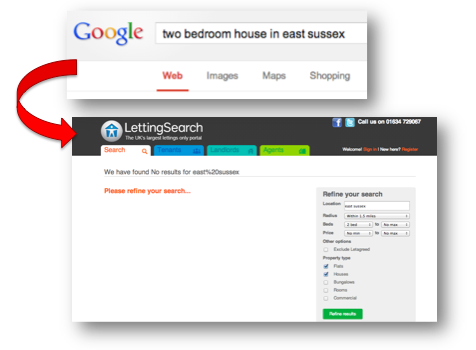
It clearly offers absolutely no value to the user, and therefore shouldn’t rank very well for that specific search term. To see whether this might be affecting your site, do a site search (type ‘site:www.yourdomain.com’ into Google) and see how many low quality pages come up. If none, great – onto the next thing!
Duplicate Content
Similarly to above, duplicate content adds very little value to the user, and is a major culprit for causing panda penalties. Broadly speaking, there are two kinds of duplicate content – external and internal.
External duplicate content is where multiple domains are showing basically the same content, and therefore Google will typically try to identify which website is the original source, or adds the most value. External duplicate content looks like this.

In my experience, the best way to combat this type of duplicate content is to hire copywriters to write 300-500 unique words per page for you (if you have a low volume of duplicate pages). As is often the case, sites that get hit by external duplicate content tend to be massive and therefore this solution doesn’t scale affordably. In those instances, I’d recommend getting smart with your data. By pulling data from relevant APIs and databases you may be able to generate a unique and valuable paragraph on every page that will render your result as the most unique. It’s not ideal, but it may help.
Internal duplicate content comes in many shapes and sizes. First of all there is URL-based duplicate content. This is where different URLs show the same content. First off there is the URL capitalisation issue. All of the following URLs show the exact same content:
http://zildjian.com/Products/dRumset-...
http://zildjian.com/Products/dRuMsEt-...
http://zildjian.com/Products/DRUMSET-...
http://zildjian.com/PRODUCTS/dRumset-...
As far as Google is concerned, if each of these URLs gets linked to, they can each be indexed and considered as different pages showing the same content i.e. duplicate content. Similarly, when a URL does not have proper canonicalisation between the www-version and non-www version of the website’s pages, this can also create similar issues.
http://yoursite.com should redirect to http://www.yoursite.com (or vis versa)
While all of these issues should be resolved using the correct server header responses, it’s also recommended that you have re=”canonical” tags implemented to ensure that Google knows which page they should be indexing whenever there is any confusion.
Other forms of internal duplicate content
One of the most common forms of internal duplicate content is meta-tag based. This is an easy one to diagnose, as you can simply log in to Webmaster Tools and look at “HTML Improvements” under the Search Appearance tab. Ideally you should have 0 duplicate or short titles and meta descriptions.

Ad-Content Ratio
When clients ask how much advertising they can get away with before they’re in panda territory, I usually advise to keep ads to a minimum until you’ve recovered. Long banner ads above the fold are an absolute no-no. To answer the question visually, this is ideal:

This is on the edge:

This is too much:

Unfortunately, if you want out of panda, you’re probably going to have to ditch the ads for the time being until the site recovers.
Page Loading Speed
Google have made it very clear that poor page loading time can hinder a website’s rankings. If that weren’t enough, there are plenty of case studies kicking around that demonstrate how page speed is linked to your conversion rate.

I recommend using Pingdom and GTMetrix to diagnose your site’s page loading speed. The general rule of thumb is to keep page loading time below 2 seconds. One thing to bear in mind when optimising page speed is that external widgets can be a pain in the backside. If you’re using lots of embedded widgets (email subscription forms, social plugins, content sliders etc.), these can often be the culprits slowing your site down. Keep the number of external DNS requests to a minimum where possible.
Clean design
Clean design is quite a subjective topic – one man’s trash is another man’s treasure. In general, avoid too many contrasting colours, make sure there’s a lot of ‘white space’, and make it easy for users to navigate. Your site needs to look trustworthy and professional, not cheap and tacky. Which one of these websites would you trust with your credit card details more?

Over optimisation
When it comes to over-optimisation, I think the only thing you can really go too far with (before getting into the realms of black hat / keyword stuffing) is over-shooting with your title tags.
I don’t think title tag over optimisation is something that you’d ever be penalised for in isolation. However, if you’re already suffering from another major signal, and you’re also found to be stuffing your titles with every key term under the sun, it’s unlikely to help you in any way. In the screenshot below, I’d consider the top result okay, and the second result as over-doing it.

Clear Site Architecture
There are a handful of reasons why you’ll want to fix up your site architecture following a panda hit. First of all, a clear site structure will improve your indexation – enabling Google to spot your changes and update their index less time. It will also help your users navigate the site better, which should be noticeable in the behavioural factors (reduced bounce rate, longer time on site etc).
The rules of thumb when it comes to site architecture are:
No page should have more than 100 links (internal & external combined)
No page should be more than 3 clicks from the homepage (i.e. your site’s ‘hierarchy should be as flat as possible)
Navigation should be clear and intuitive for the user
You’ll also want to ensure that your site isn’t riddled with broken links and 404 pages. This not only makes navigating the site a pain for the user, but it also hinders indexation. To check for broken links and 404s, I’d recommend running a Screaming Frog or Xenu crawl of the site, and checking your Webmaster Tools ‘crawl errors’ section.

XML & HTML Sitemaps
To improve your indexation, it’s recommended that you submit a HTML and XML sitemap to Google in Webmaster Tools. One tip that i’ve used in the past to identify which particular sections of a site are being hit by a Panda update, is to put each of your website’s page categories into a separate sitemap, to see the indexation ratios of each page category.
For example:
Swimwear Sitemap – 2,492 pages submitted / 3,120 pages indexed
Sunglasses Sitemap – 8,429 pages submitted / 1,231 pages indexed
Women’s Shoes Sitemap – 1,412 pages submitted / 1,313 pages indexed
Blog Sitemap – 724 pages submitted / 701 pages indexed
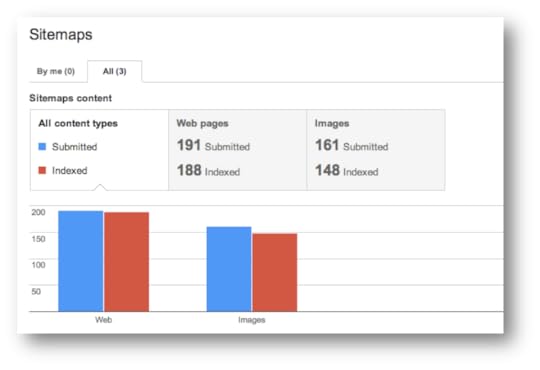
By segmenting our sitemaps into four category specific ones, it’s clear that the sunglasses section is what’s causing us problems. While panda hits are typically site-wide, they do tend to hit certain sections of a site harder than others. This is a good way of confirming the epicentre of the problem.
Grammar & Spelling
I think this is pretty self-explanatory. If you’re worried your site may have poor spelling and grammar (a typical issue with user-generated content sites), it’s worth using Grammarly to highlight the all of the suspect issues. Alternatively, if there’s a link between your thin / low quality content and poor grammar, you may be better off culling those pages off or combining them into a more comprehensive and well written piece of content.

Behavioural Factors
It’s been suggested that having an unusually low click through rate from search results is a probable factor taken into account by the post-panda algorithm. This once again highlights the importance of having compelling title tags and descriptions, but also brings up the opportunity for using rich snippets to increase your CTR.
Which one of these is more compelling to click on?

There are several different options for marking your content up like this, but i’d recommend using Schema.org markup, as it’s probably the most universal and comprehensive option. You can also connect your page with your Google+ publisher and author profile, to show your staff’s faces alongside search results.

Step 3: Fix everything and wait!
Once you’re absolutely sure that there is nothing more that you can do to improve the website, it’s time to sit back and wait. In the past, i’ve noticed that when you’re making these changes you will see slight increases in traffic and site performance, but nothing significant. It’s not until Google re-run the algorithm in a data refresh that you leap up to pre-panda traffic levels. The last time this was refreshed was around July 18th.
Conclusion
I wrote this very long article because I know how it feels to have a site hit by panda; it sucks. I hope this has sparked a few actionable ideas that might help you to get things back on track. Of course, if you have any questions feel free to drop me a tweet, send me an email, or give our office a call. I’d be more than happy to help.
Good luck!
Marcus
The post Panda Recovery: A Guide to Recovering Google’s Panda Update appeared first on Venture Harbour.
August 5, 2013
Survey: How Important is Content Marketing to Music Companies?
In a few weeks, we’ll be publishing our first white paper, which features insights on what sets apart high performing digital content (that generates many shares, links, and impressions) from mediocre content in the music industry. We’ve looked at over 15,000 pieces of content in our study.
As a part of our study, we’re looking at how important this emerging marketing trend is to music companies, who’s responsible for it, what budgets companies are allocating towards it, and what the major challenges are.
To help us complete this, we’d be really grateful if you could complete the short survey below, or pass this link on to anyone who is responsible for marketing within a music company. We’ll send you a copy of the report as soon as it’s finished (est. early September).
The post Survey: How Important is Content Marketing to Music Companies? appeared first on Venture Harbour.
July 5, 2013
21 White Paper Marketing Tips
When it comes to B2B content marketing, case studies and white papers are usually one of the most effective ways of attracting interest from potential customers online. But how do you market them to drive more downloads?

Over the past few weeks, I’ve been working on one of our whitepapers, and it’s prompted me to do a lot of digging around on what differentiates successful whitepapers from poor performing ones. Here are 21 tips, tactics, and strategies for marketing whitepapers & case studies.
Note: I’m currently running an experiment testing all of the methods below to see which drives the best volumes of downloads & CPAs. I’ll post the results on this blog when they’re ready. If you want to be notified, feel free to join our monthly newsletter (scroll down and the form will pop up on the right).
#1 Create an amazing landing page & A/B test it
Your landing page is arguably one of the most important areas to focus on when it comes to marketing your white paper. Without a well-converting landing page, all of your marketing efforts are worthless. Your landing page must clearly explain why your audience should hand over their details & give away how ever many minutes of their lives reading your white paper. What value does it add? It should also be accessible from all devices, look attractive, and minimize the barrier for someone to download.

I strongly advocate services like Concept Feedback and Dribbble for getting feedback from professional designers and conversion rate optimisation specialists on how to improve the conversion rate and design of your whitepaper landing page. Following on from this, you should be A/B split testing your landing page using a tool like Visual Website Optimizer or Optimizely to iterate and improve your rate of downloads.
#2 Leverage speaking opportunities
In my opinion, the best talks at conferences tend to be those based on case studies or research data, where the speaker shares something new. Speaking at conferences about the data and insights from your whitepaper can be a great way to promote your whitepaper – just make sure you don’t give it all away in your talk, and provide the audience with a reason to go and download the white paper.
#3 Facebook Promoted Posts & Sponsored Stories
When it comes to marketing content on Facebook, promoted page posts take the cake. I’ve written about Facebook advertising effectiveness in great depth elsewhere, but to keep things simple I recommend setting up promoted page posts targeted to your specific audience in their news feed with conversion pixel tracking and an oCPM (for conversions) bid type.
This means that Facebook will algorithmically optimise your advertising budget to drive more conversions (downloads) of your whitepaper. Remember to set up your Facebook ads using the power editor, as I don’t believe you can create promoted posts targeted to a specific audience in the standard ad manager. You also can’t specify that your ads ONLY appear in the news feed from the ad manager.
#4 Partner with industry associations & conferences
Virtually every industry has a major annual conference with thousands of participants. Due to the typically annual or bi-annual cycle of conferences, many conferences rely on content marketing in the form of white papers, blog posts, and video to keep their conference in the minds of potential participants. Because of this, there are usually some very valuable partnership opportunities to get your white paper in front of the audience of their participants.

Similarly, look into teaming up with an industry association to partner on the promotion or research of your whitepaper. In the digital marketing world, there are associations and companies like Econsultancy, Content Marketing Institute, iAB, and IDM who regularly partner with digital marketing companies to produce and distribute relevant white papers.
#5 Feature journalists in your whitepaper & send it out to bloggers
If possible, interview influential bloggers or journalists to be included in your whitepaper. When your whitepaper is released it’s highly likely that they will help to promote the paper, or even write about it. Once launched, create a list of ~50 or so relevant influential bloggers in your industry and work your way through the list sending a personalised message to each inviting them to cover the data from your whitepaper.
#6 Google Adwords, The Display Network & Re-targeting
If there are specific terms that people search for in Google that would suggest that they’re of your target audience or searching for the information your whitepaper provides, a pay-per-click AdWords campaign could be very effective. If on the other hand, there are specific sites that capture your audience e.g. The FT, if you have a whitepaper on finance, then you could consider running a display network ad campaign to drive leads to your landing page. You may also want to try retargeting (or Facebook exchange) to try and bring back people who have visited your landing page but left without downloading the whitepaper.
#7 Distribute a press release on news wires
If there are specific niche news wires in your industry, now is the time to use them. I’m a big fan of services such as Game Newswire in the gaming industry and Mi2N in the music industry as they enables me to push a press release out to 50-100 music or game industry sites in one go – which is obviously great if you’re marketing a whitepaper in these industries.

Some of the niche-agnostic services like PRweb and 24/7 Press Release can also be good. If nothing else, these news release sites tend to rank quite well in search engines, so if you title your release properly, it can be a good workaround for ranking for terms in Google that will likely drive potential download leads.
#8 Promoting white papers on LinkedIn
If you’re a member of any relevant LinkedIn Groups, they can be a great place to share your white papers – although be sure not to come across as too self-promotional. I’ve personally not had much luck in the past with LinkedIn Advertising, so I can’t advocate that (although it’s been a year or so since I last played around with them). Groups on the other hand tend to get a good amount of engagement, and given the professional nature of LinkedIn, it’s a great place to reach a b2b audience.
#9 Leverage your existing newsletter & email list leads
If you have an email list of potential clients, existing clients, or anyone who may find your whitepaper relevant, consider sending the whitepaper out to them. Of course, if the purpose of your whitepaper is to generate new leads, then it may be worth re-thinking what you want your existing leads to do with the whitepaper. Instead of getting them to just download it, perhaps it would be more beneficial to send them to a landing page where they pay to download the whitepaper with a tweet or a share to unlock the whitepaper, to encourage some initial social sharing.
#10 White paper syndication services
There are a number of whitepaper syndication sites, such as Find Whitepapers, Tech Republic, Tech Target, and Knowledge Storm, which offer both free and pay-per-lead schemes for promoting your whitepapers. It probably depends largely on your niche as to whether this would likely drive leads or not, but as you can give them a shot for free it’s probably worth doing anyway.
#11 Using Promoted Tweets
While sending out tweets and incentivising them with ‘pay with a tweet’ schemes can work wonders, promoting tweets can be a safer way to ensure that your message is seen by the right people on Twitter, and doesn’t get buried in the news feed.

There are a number of different ways to promote your content through Twitter’s self service ad platform, but for driving whitepaper downloads promoted tweets is probably the most cost effective option.
#12 Keep your download forms short and sweet
One of the biggest mistakes companies make with their whitepaper landing pages is asking for too much information. Keep it short and sweet. If all your really need is name, company, email, and phone number, leave it at that. Asking for too much information often lowers the overall conversion rate, reducing the number of leads you drive.
#13 Use Whitepaper distribution services
There are several whitepaper distribution services, such as CIO Whitepapers and BitPipe, which for a fee will distribute your whitepaper to a variety of whitepaper syndication services and repositories.
#14 Have an attractive whitepaper cover design
While we’re taught not to judge a book by it’s cover, we do. It’s human nature to use our senses to predict whether something will likely cause us pain or pleasure, and because of this having a good cover design is important.
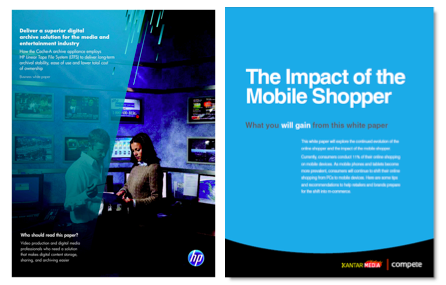
If you use Photoshop, you can download Cover Action Pro to get some nice PSD templates for creating whitepaper / book covers. Alternatively, you can always outsource this to a talented graphic designer – the cost of getting a nice cover designed will surely pay itself back in increased downloads.
#15 Keep the topic of your whitepaper focused & offer implied value
If your whitepaper is on ‘social media’, consider digging a bit deeper and offering something more specific. When I type ‘social media whitepaper’ into Google, over 68,300 phrase-matched results are returned. 
The more specific the topic and audience of your whitepaper, the more value it’s likely to add. If you create a whitepaper on “Using location-based social media services to grow retail businesses”, there is a very clearly defined audience and implied value.
#16 Upload it to Slideshare
Slideshare is a great place to upload a presentation version of your whitepaper, as there’s quite an active community of professional people using the platform to learn and find insights. The trick is to ensure that your presentation incentivises people to visit your landing page and download the full whitepaper.
#17 Host a related webinar
Similarly to hosting an event or meetup, running a related webinar and offering your whitepaper as related materials or a gift can be a good way of driving interest or downloads of your whitepaper. The benefit of webinars over events is that it eliminates the geographic boundaries of your audience. For a company like Venture Harbour (where our clients are from all over the globe) webinars work quite well, as it enables us to connect with people in countries who otherwise would struggle to attend our meetups and events.
#18 Create a video summarizing key points
There a few benefits to turning the insights from your whitepaper into a video. First of all, it’s great from a search perspective as Google is including more and more universal video results in search results. You can also drive a lot of views from within YouTube through related videos, and people searching for your topic in YouTube. While YouTube may not seem like a platform where business-related research & whitepaper data thrives, when done right it can generate a lot of views. Take the social media revolution video for example, while it does have a B2C focus, it’s essentially whitepaper research turned into a video that’s generated close to 3 million views.

#19 Write guest blog posts
If you, or someone on your team, is an avid blogger, consider offering to write guest posts on related industry blogs sharing interesting insights and data from your whitepaper. Guest blogging is a great way of passively promoting content as the blog posts can end up referring traffic (and leads) for years to come. As you write more and more blog posts, the organic traffic driven to your landing page accumulates.
#20 Create a Facebook App Tab for your whitepaper
A tactic that I don’t see used particularly often, but can be very powerful when hooked in with the open graph is creating a Facebook Application & Page Tab to enable fans to download your whitepaper from Facebook. As Facebook Apps are essentially just HTML pages iFramed within Facebook, you don’t need to make any huge changes to your existing landing page to turn it into a Facebook App. You’ll just need to make sure it can be hosted on a secure HTTPS server.

If you want to go one step further, you can make it so that every time someone downloads your whitepaper, an update is posted on their timeline (promoting the whitepaper to their friends). You could even create an open graph ad (or app sponsored story) to ensure that this post gets maximum prominence in their friend’s news feeds.
#21 Host a meetup / conference / event and offer it as a gift
I’ve attended quite a few meetups and seminars where companies have offered their whitepapers as a gift to attendees. It’s a smart idea, but where most go wrong is in giving attendees a compelling reason to download it as soon as they go home – there must be an aspect of urgency (in my opinion), otherwise it gets forgotten. You could create a specific landing page for attendees of that event which expires in 48 hours, or perhaps include an offer such as ‘download our whitepaper and get 50% off our next event’.
Conclusion
There’s one point that I haven’t included in this list that I think is worth mentioning: SEO. Of course, if you have a whitepaper on entertainment industry statistics and your rank #1 for ‘entertainment statistics’, you’re likely to drive some great leads through organic search.
That said, if you do all of the above and promote your whitepaper on many different platforms all linking back to your landing page, this will happen naturally to some extent. Just make sure your landing page is well optimised and represents a valuable result for Google to rank #1 for related keywords.
Finally, if you do need assistance with creating and marketing white papers, case studies, or eBooks, feel free to get in touch or learn more about our white paper marketing services.
Image Credit: Guillaum Ebrialon
The post 21 White Paper Marketing Tips appeared first on Venture Harbour.
June 11, 2013
Visualising Networks: Who Influences Who in the Music Industry
Something strange happened in Iceland at RIMC. About half way through his talk on networks, Matt Roberts from Linkdex analysed the ‘network’ of speakers at the conference to identify ‘who he should take for lunch’ i.e. who was the most influential speaker who he wasn’t already connected to. To my surprise, I was that person.
By strange coincidence, Matt and I were sat opposite at the speaker’s dinner. After catching my first glimpse of the Northern Lights and being initiated to Icelandic ‘Black Death‘, I (probably not so soberly) asked Matt whether we could analyse the whole music business community as a network using Linkdex.

What you’re seeing here is a map of who influences who online in the music business community. A few things to bear in mind:
The analysis was based on recent activity (last 200 tweets). It’s based on twitter conversation. Lots of chat happens via email, phone and face to face, so this is far from gospel. However, that doesn’t mean that it’s not useful or valid as a method of understanding relationships between people.
When talking about ‘influence’ we’re referring to someone’s ability to change another person’s behaviour, not social popularity. The most influential people in this analysis are those who have the biggest impact on changing other people’s behaviour.
The direction of the arrow indicates who is influencing who.
The length of the arrow indicates relationship depth. The shorter the arrow, the closer the relationship.
The people towards the center of the diagram are most important / influential in this community.
The larger a person’s circle, the more influential that person is generally.
The colour of the circles has no relevance (blue is me, orange were the starting nodes).
A major limitation of this analysis is that it’s based on Twitter activity. While generally quite accurate, there are anomalies.
Let’s dig in.
Who are the most influential people online in the music industry?
While there is no clear individual influencer at the center of the music industry, there are a handful of people who collectively influence a large portion of the music business community online: Mark Mulligan, Dave Haynes, Adrian Fusiarski, Ian Hogarth, Jonas Woost, Stuart Dredge, and Ian Rogers. Out of the bunch, Mark is arguably the most important to this community based on influence alone.

Which music industry publication is the most influential?
Billboard? Music Week? Hypebot? I analysed the network influence of each news vendor to find out how similar or different the paths by which they influence people in the music community are.
Billboard Biz is heavily influenced by Music Ally, Mark Mulligan, and Ian Rogers. Billboard Biz influences Hypebot, but not vis versa – although Hypebot does influence Glenn from Billboard.
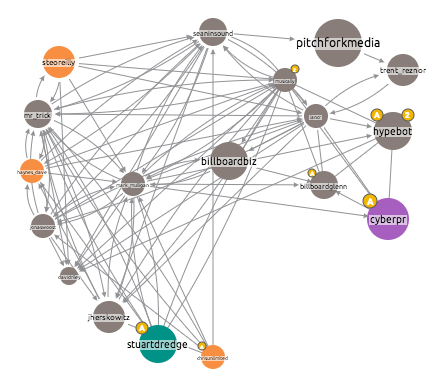
Hypebot is not being influenced by many of the key music community people via Twitter, but it is influencing them. Again, Mark Mulligan, Music Ally, and Ian Rogers are the most influential people who are currently influenced by Hypebot.
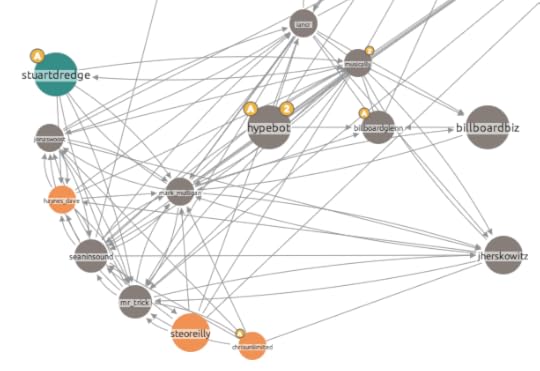
Music Week is a slightly different ball game. Music Week is influencing Sean Adams (Drowned in Sound), Darren Hemmings, Chris Cooke (CMU), Jonas Woost, and Mark Mulligan. Unlike Hypebot or Billboard, it’s not directly influencing Ian Rogers.

So there’s no clear winner, but perhaps it’s fair to assume that Billboard Biz & Hypebot share roughly a similar audience, whereas Music Week caters to a slightly different one.
Why is this useful?
When you break down an industry as a network of people, and you know where you and others fit in within that network, you can be more effective in how you distribute your time, energy, and budget to meet more of the people you want to meet.
For me personally, while I have no interest in becoming the center of this network, it has made it clear that there are people who would be good to meet. Why have I not gone for a beer with Mark Mulligan, Dave Haynes, Chris Cooke, Ian Hogarth, or Sean Adams, when we’re clearly connected to so many of the same people, have very similar interests, and are all based in and around London?
Mark, Dave, Chris, Ian, and Sean: If you’re reading this, let’s make it happen.
As a marketer responsible for creating and distributing content campaigns on behalf of brands in the music industry, viewing this network in this way has helped me appreciate the role that certain brands and people play in the spreading of content throughout the music industry.
The post Visualising Networks: Who Influences Who in the Music Industry appeared first on Venture Harbour.



